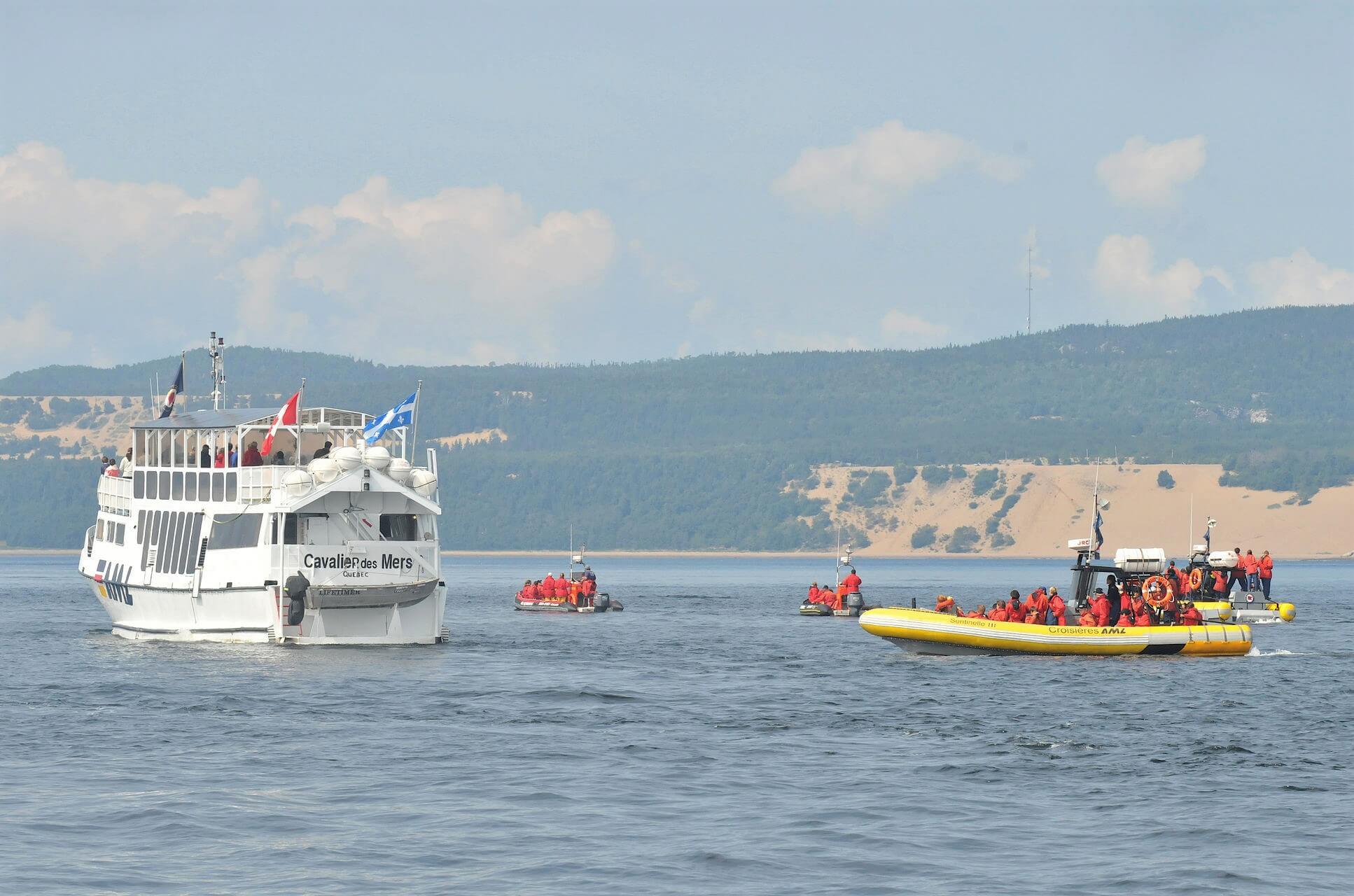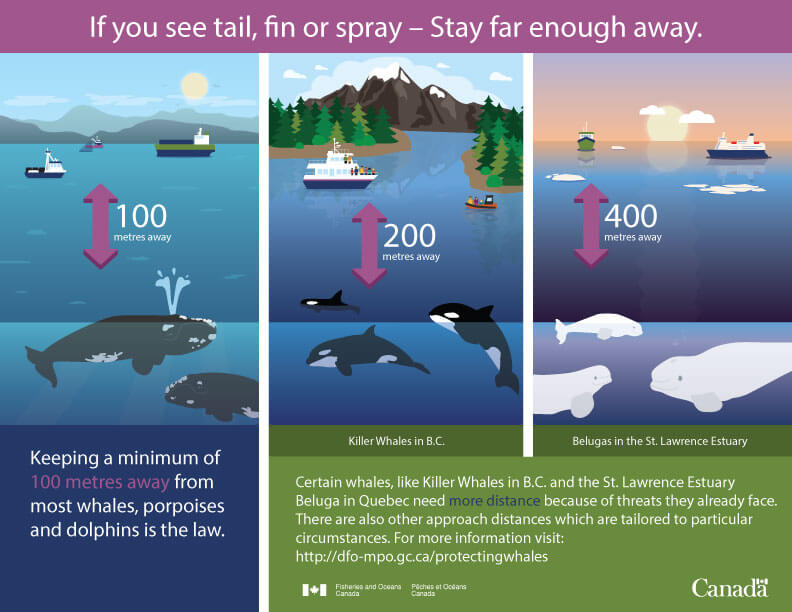Marine mammal conservationists have reason to celebrate: From now on, it will be forbidden to approach within 100 metres of any marine mammal, anywhere in Canada. Prior to July 11, 2018, there were no restrictions on approaching marine mammals, with the exception of a few regional regulations or voluntary guidelines.
The regulations affect all types of watercraft – kayaks, motorboats, Zodiacs, sailboats, etc. – operated by professional or recreational boaters. Certain distances are species- or situation-specific:
• 200 m for all killer whale populations in British Columbia and the Pacific Ocean;
• 200 m for all whales, dolphins and porpoises in the Saguenay-St. Lawrence Marine Park;
• 400 m for threatened or endangered whales, dolphins and porpoises in the St. Lawrence Estuary:
• 50 m for certain parts of the Churchill River Estuary (including the Churchill River) and certain sectors of the Seal River.
• 200 m for a resting cetacean or one that is accompanied by a calf.
“This is great news for St. Lawrence belugas,” affirms Robert Michaud, scientific director of the Group for Research and Education on Marine Mammals. “For belugas, the 400-metre distance will be applied throughout their summer range and not just in the Marine Park area. This is really an important step forward.”
The approach distances have been established based on numerous studies on different species, in an effort to minimize their disturbance. Indeed, we know for example that blue whales alter their feeding behaviour when boats are less than 400 away.
Disturbing marine mammals banned
The updated Regulations also clarify what exactly constitutes disturbance of a marine mammal:
• Feeding it;
• Swimming with it or interacting with it;
• Moving it (or enticing or causing it to move);
• Separating it from members of its group or going between it and a calf;
• Trapping it or its group between a vessel and the shore or between a vessel and one or more other vessels; or
• Tagging or marking it.
• Fines may be issued to offenders.
• Recommendations are also made for the presence of porpoises or dolphins playing in the wake of a boat as well as for the presence of seals and sea lions, whether in the water or on land.
What about the Marine Park Regulations?
Rules specific to the Saguenay-St. Lawrence Marine Park will continue to apply as usual.






